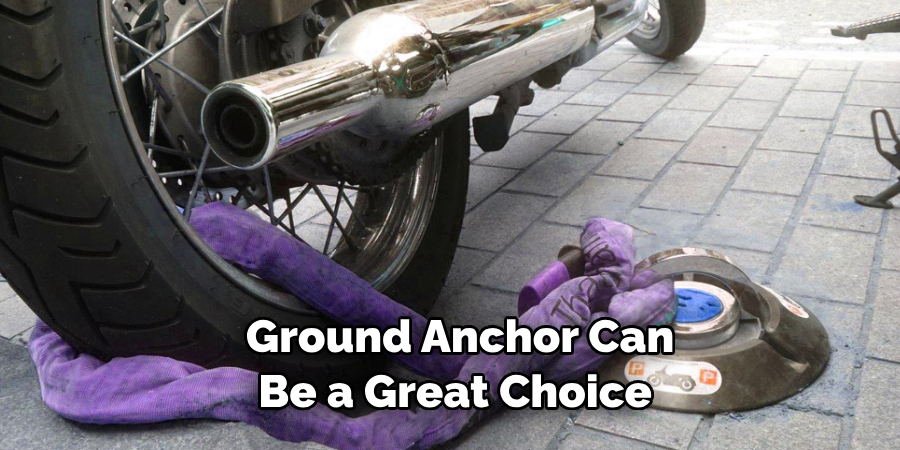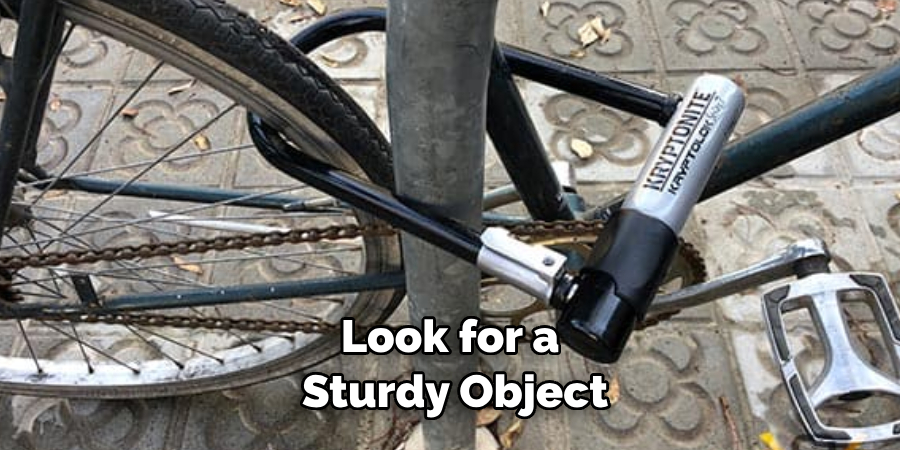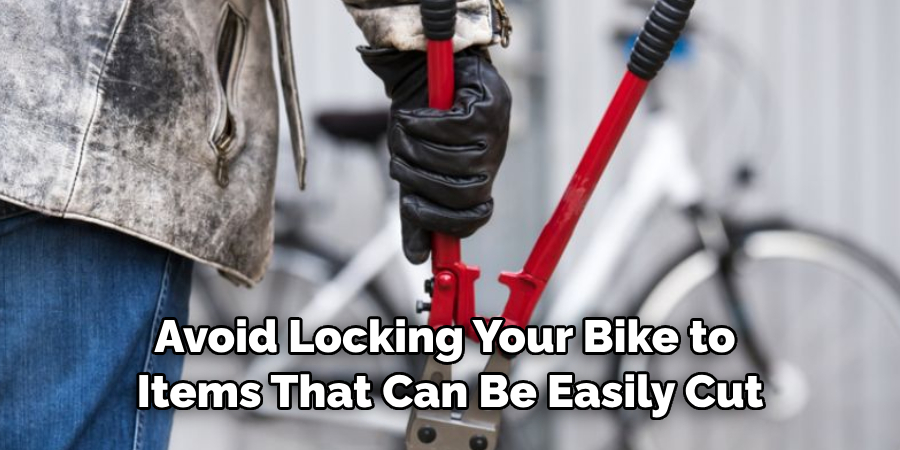Do you ever wish your bike had an extra layer of security? Do you want to avoid leaving it outside in public places or looking for a creative way to store it safely when you can’t use a traditional bike rack? Don’t fret – we have the perfect solution for all cyclists who need answers on how to lock their bikes without a rack.

Finding one that works best can be tricky, whether searching for a way to lock your bike on the street, in the garage, or at another location without a rack. We recommend considering several solutions to ensure your bike is secure and well-protected from theft or damage.
Read on as we provide all the vital information that any cyclist needs when learning how to lock a bike without a rack!
What Will You Need?
The equipment you need for this task will depend on the solution for locking your bicycle. However, no matter which method you use, all cyclists should have a U-lock at the very least to add extra protection.
In addition, here is a list of other materials that you may require:
- Cable lock or chain
- Padlock
- Ground anchor
- Rebar stake
Once you’ve gathered the necessary materials, it’s time to learn how to lock your bike without a rack.
10 Easy Steps on How to Lock a Bike Without a Rack
Step 1. Find a Sturdy, Immovable Object:
Look for a solid, immovable object to loop your bike chain or cable through. This could be a light post, a metal gate, or even a tree. The idea is to prevent the bike from being lifted and carried away. Avoid anything that can be easily cut through or dismantled.
Step 2. Loop the Chain or Cable:
After identifying a sturdy and immovable object, pass your cable or chain through the bike’s frame and the chosen object. Take note to loop through the front wheel as well, especially if it is a quick-release one. If you have a U-lock, you can use it to link the frame and the rear wheel, adding an extra level of security. The goal is to make your bike less attractive to thieves by making it harder to steal.
Step 3. Secure with a Lock:
Next, use a quality padlock or a combination lock to secure the ends of the chain or cable. Make sure the lock is not in contact with the ground, as this can make it easier for thieves to pick or smash it. The lock should also be a manageable height, as this can allow leverage for bolt cutters. Ideally, position the lock at the top of the wheel towards the inside of the bike. This makes the lock more difficult to access and requires more effort to move the bike.

Step 4. Add Extra Security:
If you want to increase the security of your bike, consider using additional locks or chains. A second U-lock or cable can secure the front wheel to the frame, making it even more challenging for potential thieves. Additionally, securing the saddle to the frame is a good idea, as thieves often target seats. Remember, the more difficult it is for a thief to snatch parts of your bike, the less likely they are to attempt to steal it.
Step 5. Use a Ground Anchor:
If securing your bike to an immovable object isn’t an option, a ground anchor can be a great choice. A ground anchor is a sturdy device installed into the ground to which you can lock your bike. To use a ground anchor, you fasten it to a concrete floor in your garage or shed.
Once installed, you can pass your U-lock, chain, or cable through the anchor and your bike’s frame and wheels and lock it securely. This method can offer high security, especially when combined with high-quality locks. Make sure to install the ground anchor in a well-lit, visible area to deter potential thieves.

Step 6. Consider Using a Rebar Stake:
For those who do not have the option to install a ground anchor, a rebar stake could be a viable alternative. You can drive a rebar stake into the ground and use it as a secure point to lock your bike.
Ensure the stake is long enough so that it cannot be easily removed. Once the stake is firmly in the ground, you can loop your chain or cable through the bike’s frame and wheels, then secure it with a lock. While less secure than a ground anchor, this method still offers a significant deterrent to potential thieves.
Step 7. Mind the Positioning:
When locking your bike, it’s essential to consider the bike’s positioning. Always try to lock it in a well-lit, busy area where potential thieves can easily be spotted. If possible, change the location where you lock up your bike regularly.
Thieves are less likely to target a bike if its location is unpredictable. Furthermore, never leave your bike locked outdoors overnight if it can be avoided. The longer your bike is left in one place, the more likely it is to become a target for thieves.
Step 8. Register Your Bike:
Registering your bike with a national bike registry can add more protection. If your bike gets stolen, having it registered increases the odds of recovery. Many police departments use these registries to help identify and return stolen bikes to their rightful owners. Some registries also offer decals or markings that act as a deterrent by indicating that the bike is registered and trackable.
Step 9. Insure Your Bike:
If your bike is particularly valuable, bicycle insurance may be worth considering. Bike insurance can cover theft, damage, and even some liability. Check your home or renter’s insurance policy, as some policies include bikes. If not, standalone bike insurance policies are available.
Step 10. Regularly Check Your Bike:
Always remember to regularly check the condition of your bike and its locking equipment. Ensure that the locks and chains are functioning correctly and haven’t been tampered with. Regular checks will help you quickly notice if anything is amiss and take corrective action.
Following these steps, you can keep your bike locked securely even when a traditional bike rack is unavailable. The peace of mind knowing that your bike is safe is worth the extra effort.
5 Additional Tips and Tricks

- Invest in a portable bike lock. Portable locks are lightweight, durable, and easy to carry with you. You can use them to secure your bike while away from home.
- Look for a sturdy object, such as a tree or street lamp, firmly fixed in the ground and wrap your bike’s chain around it multiple times. Make sure the object is secure and won’t move or break as you lock your bike.
- Look for a sturdy post, fence, or wall to lock your bike. Ensure the item is strong and secure before locking it up; otherwise, someone could easily steal it.
- Use two locks if possible, one for each wheel and the bike’s frame. This will make it much harder for a thief to get away with your bike.
- Be sure to take off any accessories you may have on the bike, such as a basket or bag. This will make it more difficult for someone to steal your bike as they would need an extra tool to remove them from the frame.
Taking these measures can help ensure that your bicycle is safe and secure when you’re away from home. Follow these steps, and you’ll be able to rest easy knowing that your bike is protected!
5 Things You Should Avoid
- Avoid locking your bike to items that can be easily cut, broken, or removed, such as chain link fences or small trees. These are not secure and can be easily manipulated by thieves.
- Keep your bike unlocked, even for a brief moment. Thieves are opportunistic and can steal a bike in a matter of seconds.
- Refrain from using cable locks as your primary lock, as they are more susceptible to cutting tools than U-locks or heavy-duty chain locks.
- Keep your bike out of secluded or poorly lit areas where thieves can operate without being seen. Always aim for a busy, well-lit location.
- Do not lock only the wheels of your bike, as the frame can be easily detached and stolen. Always lock the frame and the wheels together.

Avoiding these common mistakes will help protect your bike from theft. Always take extra precautions when leaving your bicycle unattended, even briefly. Your bike is an important investment, and it’s worth securing it while you’re away properly.
Conclusion
Overall, how to lock a bike without a rack is not always the most secure option, but it can help to give your bike extra protection. Taking the necessary steps, like investing in a high-quality lock and properly fastening the bike, ensures you take all the proper precautions to keep your bicycle safe. Talk with other cyclists for even more tips for protecting your bike.
Also, don’t forget that understanding where and how to properly lock up your bike in different scenarios and doing so correctly every time is key. When you prioritize security and safety for yourself and your possessions, everyone benefits from it.
So go out there now and get biking — just be sure to secure it when you’re done!
About
Safety Fic is a distinguished figure in the world of Diy design, with a decade of expertise creating innovative and sustainable Diy solutions. His professional focus lies in merging traditional craftsmanship with modern manufacturing techniques, fostering designs that are both practical and environmentally conscious. As the author of diy, Safety Fic delves into the art and science of Safety Fic-making, inspiring artisans and industry professionals alike.
Education RMIT University
(Melbourne, Australia) Associate Degree in Design (Safety Fic) Focus on sustainable design, industry-driven projects, and practical craftsmanship. Gained hands-on experience with traditional and digital manufacturing tools, such as CAD and CNC software.
Nottingham Trent University
(United Kingdom) Bachelor’s in diyfastly.com and Product Design (Honors) Specialized in product design with a focus on blending creativity with production techniques. Participated in industry projects, working with companies like John Lewis and Vitsoe to gain real-world insights.
Publications and Impact
In diy, Safety Fic his insights on indoor design processes, materials, and strategies for efficient production. His writing bridges the gap between artisan knowledge and modern industry needs, making it a must-read for both budding designers and seasoned professionals.
